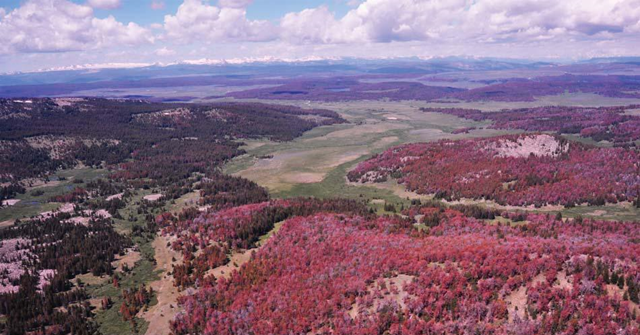Image of the Day: Mountain Pine Beetle Mortality on Whitebark Pine Trees in the Bridger-Teton National Forest
By Jim Bouldin
24 October 2010 Red foliage is one thing you’re not supposed to see a lot of in western North America, any time of year. In many places in the west–particularly through the central and northern Rocky Mountains and British Columbia–there is now a lot of red foliage, but unfortunately, it’s not just in autumn, and is occurring on non-deciduous species. The proximate causes of this are (1) Dendroctonus spp. (literally, “tree killer”), the most destructive of several destructive bark beetle genera, and (2) tree physiological stress. God’s “inordinate fondness for beetles,” combined with certain human activities, is now causing some serious problems indeed. Here I’ll try to give background on the issues related to bark beetle outbreaks, working from proximate to ultimate causes, and focusing on the one beetle species currently doing by far the most damage, the mountain pine beetle (MPB), Dendroctonus ponderosae. The MPB is attacking a set of highly important pine species (Pinus spp.) over a very large area of western North America, especially lodgepole pine (Pinus contorta), ponderosa pine (Pinus ponderosa) and whitebark pine (Pinus albicaulis), but also some of the other five needle pines (esp. limber pine). Other species of beetles in the genera Dendroctonus and Ips are also doing some serious damage to these and other species, albeit at smaller spatial scales and/or less intensively, and represent so many variations on the theme illustrated by the MPB. …
